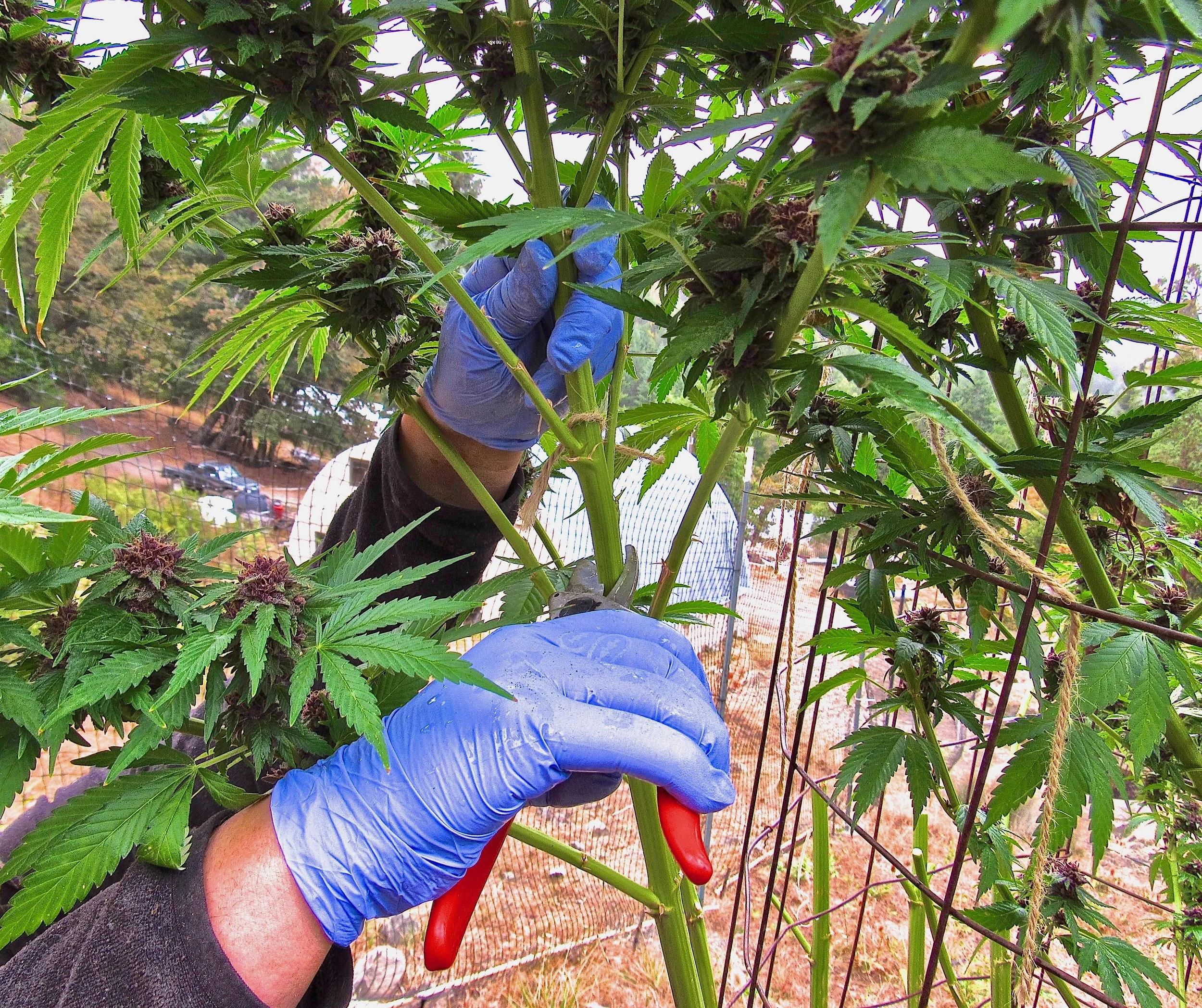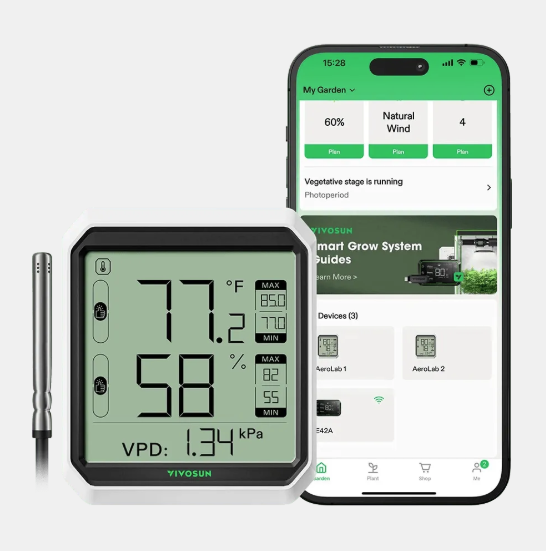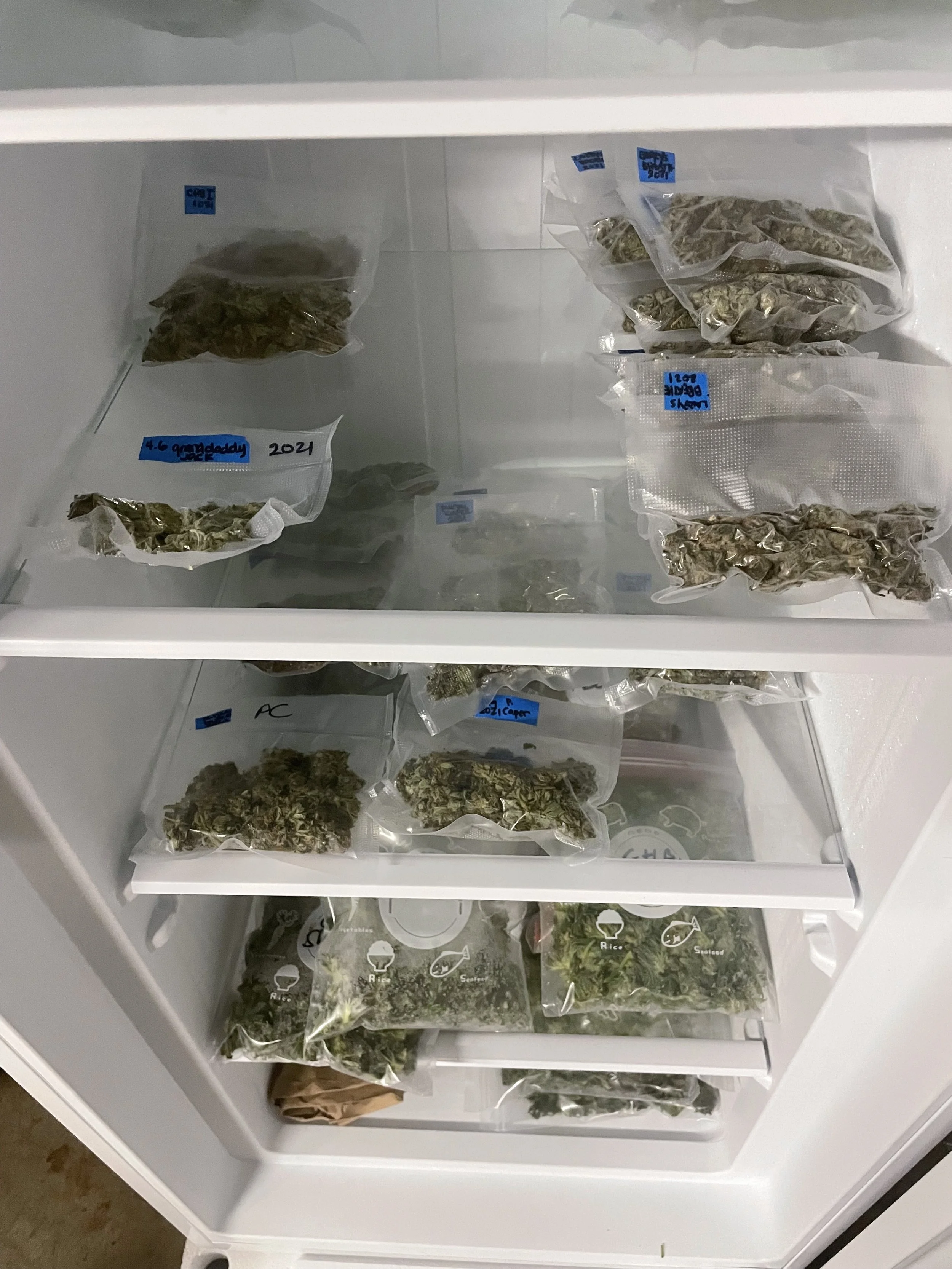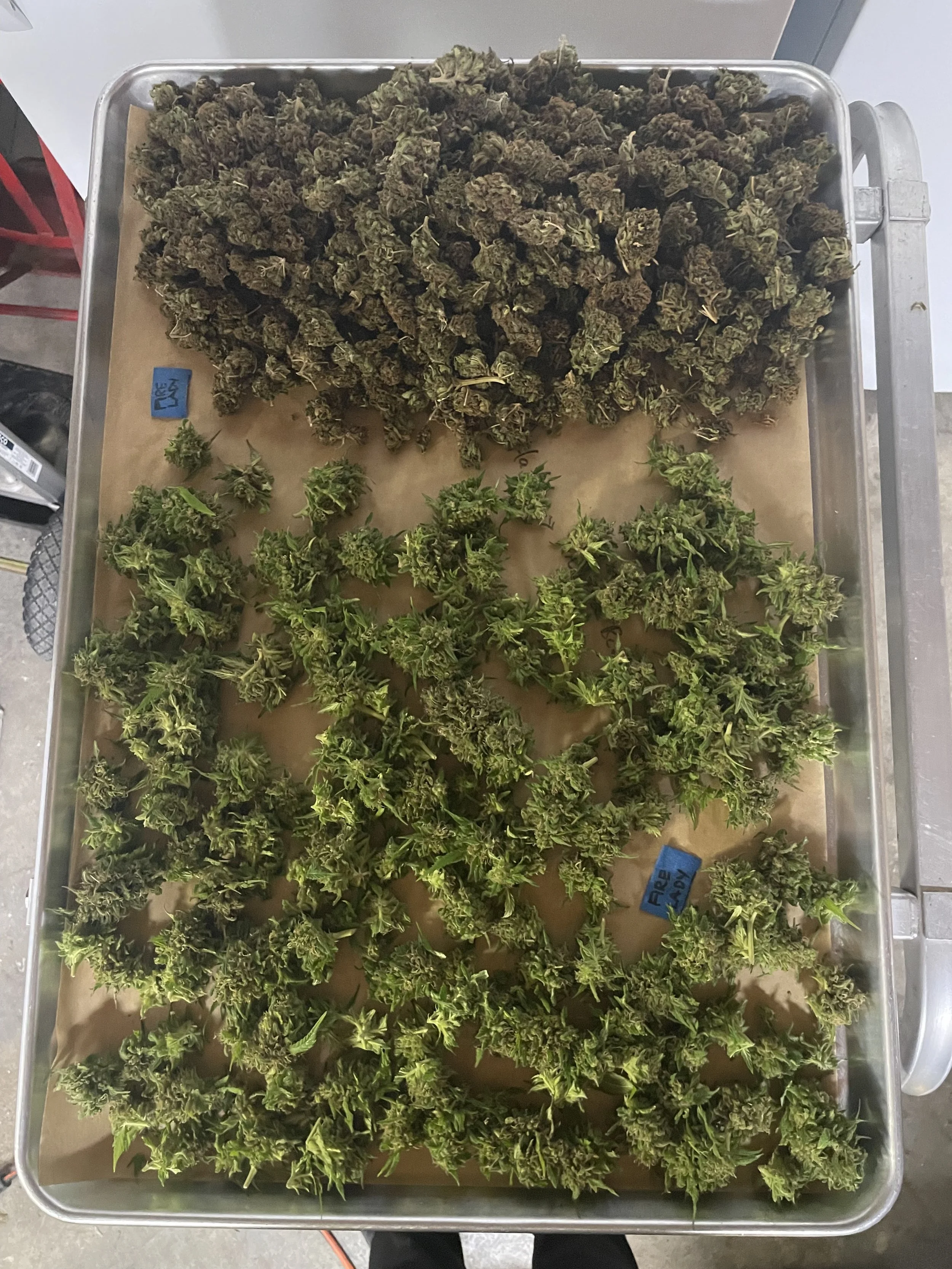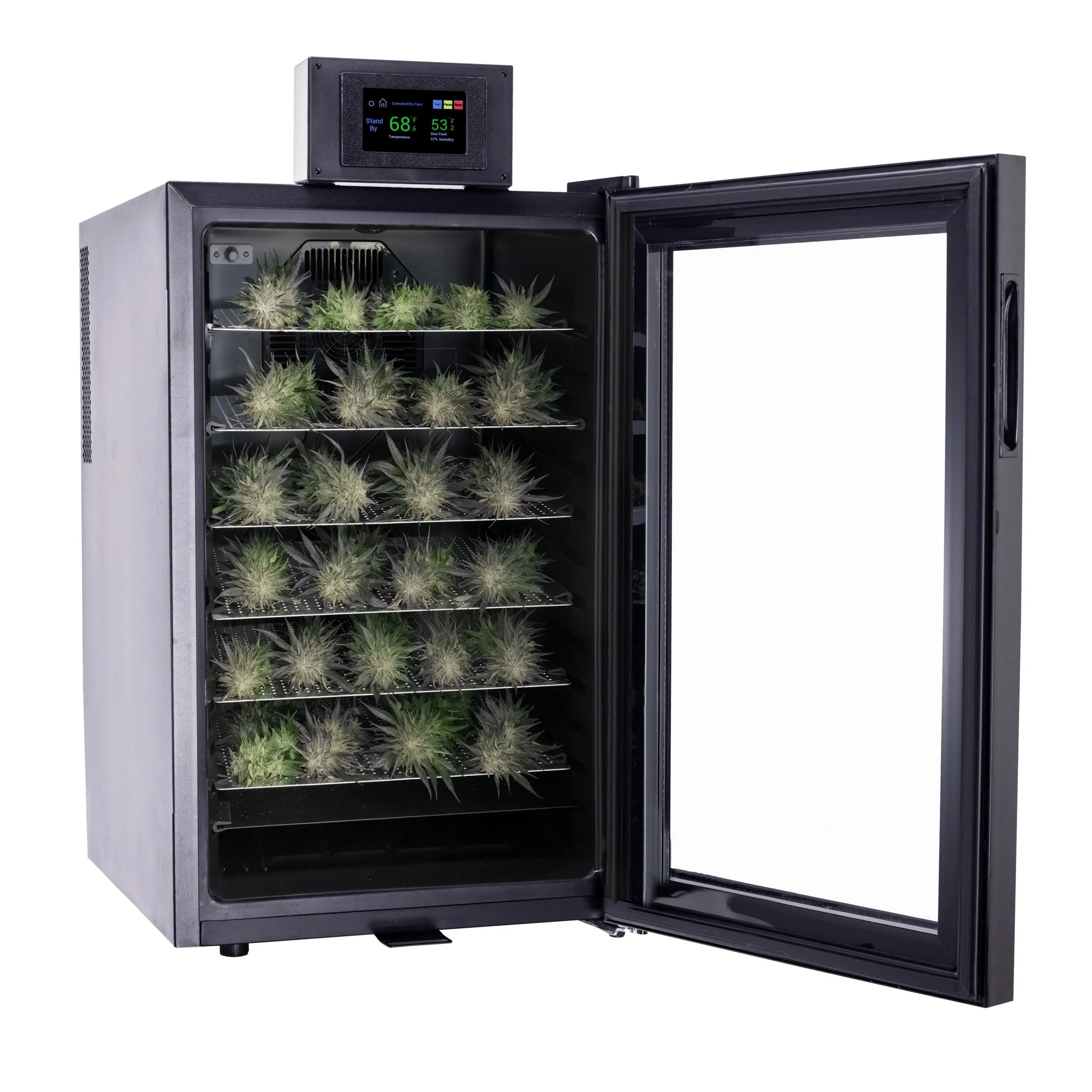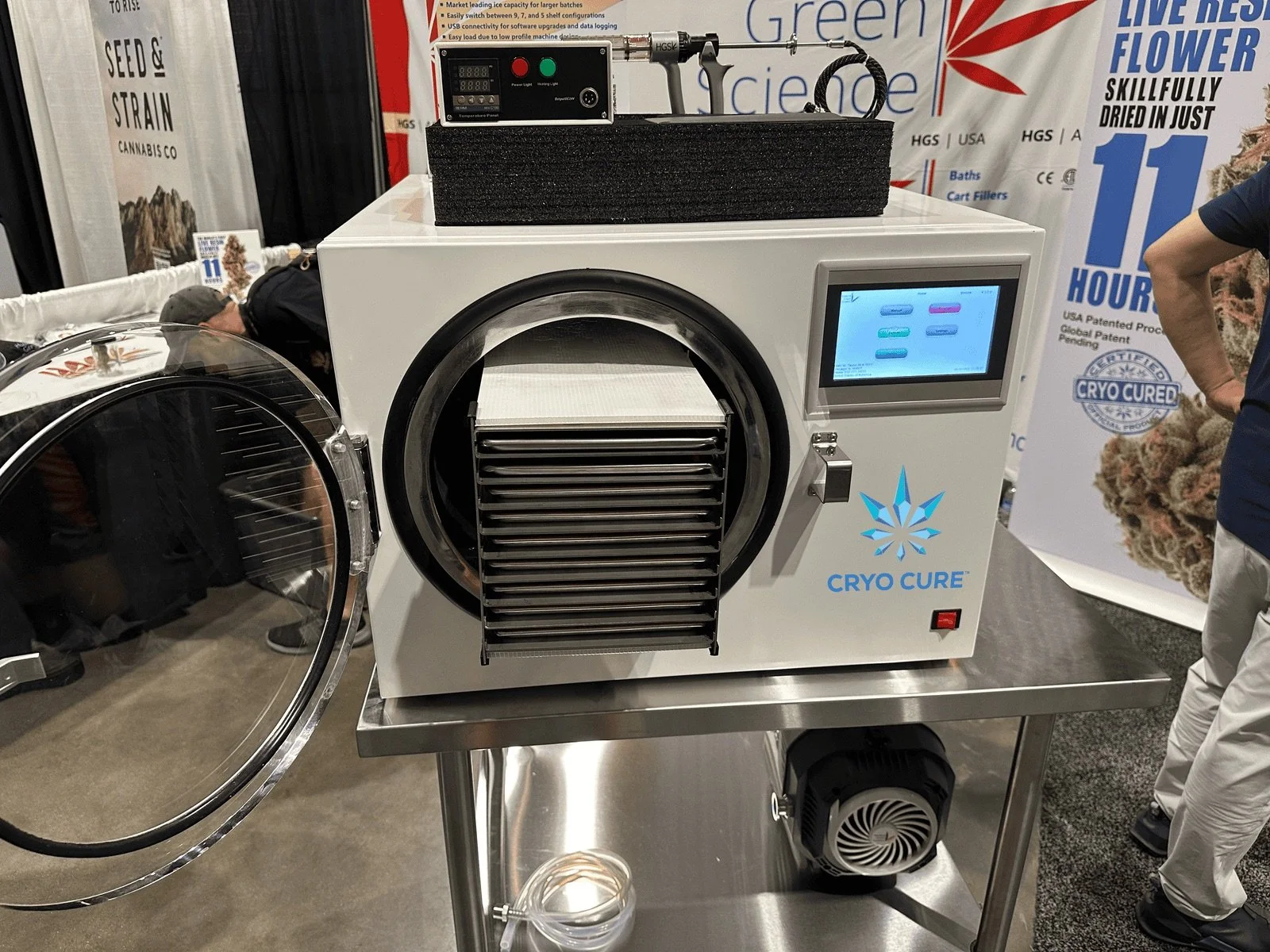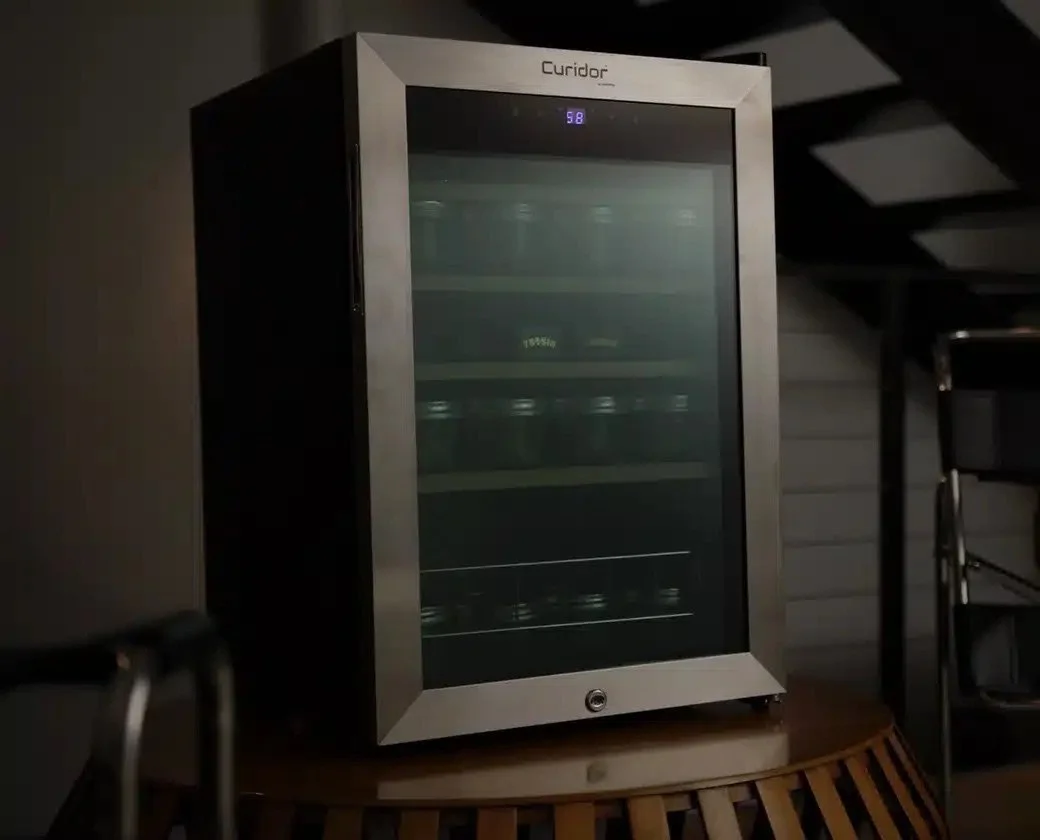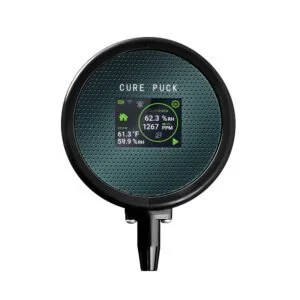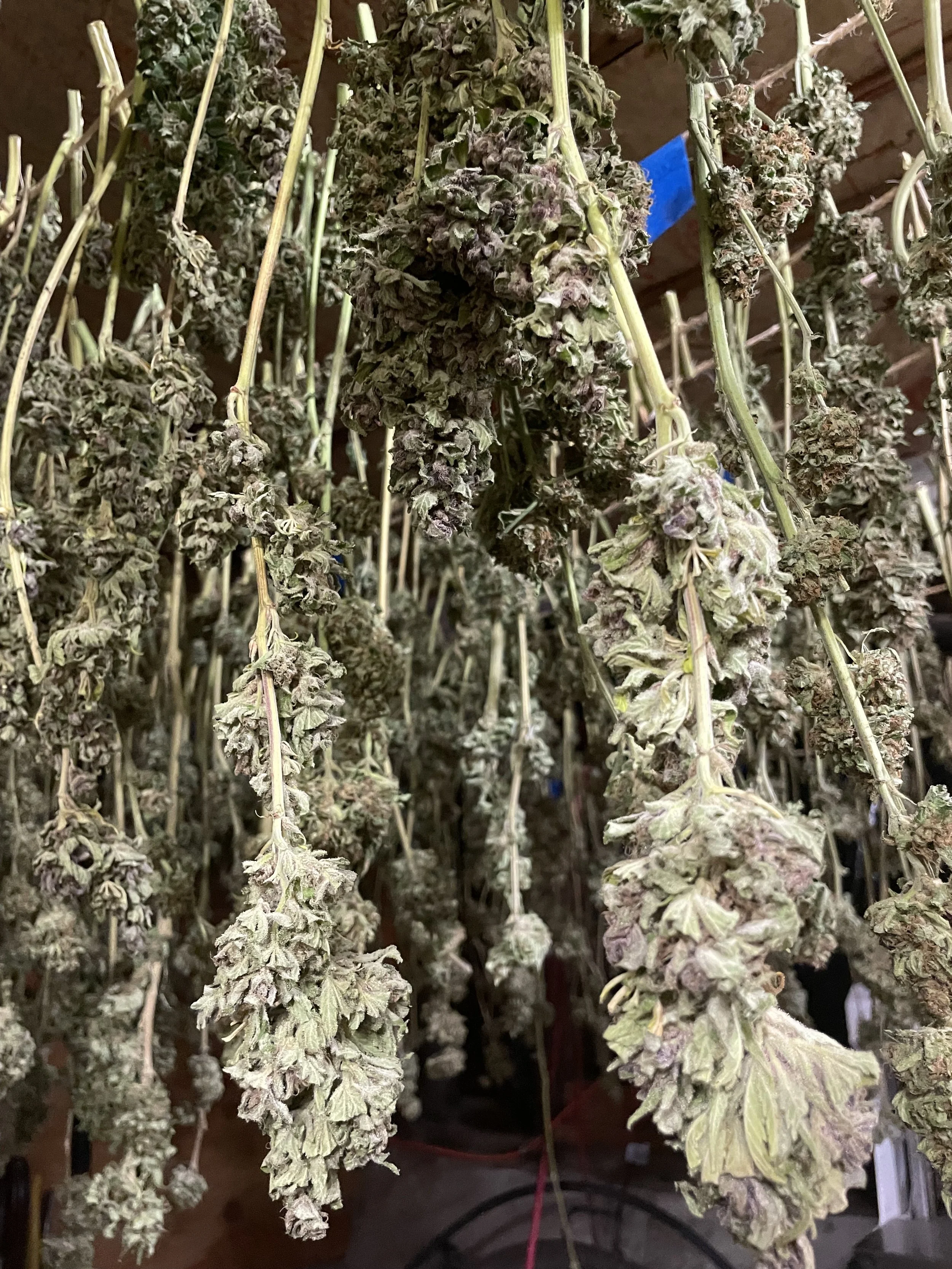5 Ways Cannabis Harvesting Has Changed in the Last 8 Years By David Downs
Croptober 2025: A New Era of Cannabis Harvest
“He who is not busy growing is busy drying.”
Sure, you made it through another busy Croptober, and the outdoor full-sun harvest is curing up. As you wait for the buds to mature—or as you have some early tester puffs—you can’t help but think, ‘What can I do differently to make this easier, or change things up next time?’
Well it’s been seven years since the best-selling Marijuana Harvest book by Ed Rosenthal and David Downs came out, and a lot of new options have come online for growers big and small in any climate.
You can upgrade to wireless sensors, upgrade your curing containers, skip drying entirely with fresh-frozen cannabis harvesting, or splurge on an appliance that does the work for you.
Let’s dig into some of the top changes to harvesting since the book came out.
More Cheap Sensors
Wireless hygrometers for cannabis drying
One of the easiest ways you can up your drying and curing game in the last few years is wireless thermometers and hygrometers. Keeping an eye on your drying and curing room has gotten way more convenient and cheap.
I’ve used the VIVOSUN sensors that easily pair with my wireless network to get temperature and humidity data on my phone anywhere in the world. You can set alerts so your phone beeps if there’s a heat spike, or a humidity spike. Even a day of high heat can cook a year’s worth of terps.
A 3-pack of sensors run as little as $30. And at the end of a drying run you have cannabis drying data on the entire cycle to see how it went and potentially improve.
Curing and Storing in Custom Bags, Not Jars
TerpLoc bags are a real game changer. You don’t want to cure in glass jars—you really have to stay on them, and you can’t be a slacker. With these bags, the curing process is easier, more consistent, and your flowers keep their quality.
One of the bigger changes in the last seven years has been the rise of special curing bags for optimal curing.
Traditional glass Ball jars, turkey bags, food-grade buckets, or barrels are sealed containers that require monitoring for excess moisture and periodic venting (aka burping) to refresh the oxygen inside. Otherwise, mold can develop.
“You don’t want to cure in glass jars,” said Rosenthal. “You have to really stay on them. You can’t be a slacker.”
Grove Bags with TerpLoc has taken over market share with a layered film bag that lets out the bad stuff while keeping in the good stuff. It’s just easier.
Dry your bud to 10–12%, then put it in the Grove Bag with 25% empty headspace, seal it, and place the bag in a cool, dark place. The bag’s semi-permeable layered polymer will keep the buds at 58–62% relative humidity. They’ll let excess water out and keep terps in. No burping needed.
More Fresh-Frozen Harvests
Here’s a frosty bud from my fresh-frozen harvest. Freezing cannabis right after cutting locks in terpenes and cannabinoids, giving you the best material for making live resin or rosin later.
When we reported and edited Marijuana Harvest (2017) we had yet to see the impact freezing the crop instead of drying it would have on the world. Today, as much as half or more of the commercial crop is thought to be frozen immediately upon harvest, for use in making extracts. All that live resin and live rosin going into vape pens, jars, and now edibles comes from freezing the fresh crop instead of the traditional 2-week drying.
Fresh frozen cannabis harvest steps
Remove the big leaves
Chop in the early dawn at maximum terpenes
Quickly buck buds down off branches
Fill freezer bags halfway
Seal and freeze to -10°F
Store in the freezer indefinitely until making hash
Award-winning grower and breeder Dan “Mr. D” Egan is fresh-freezing thousands of pounds of flower on 12 acres along the Eel River in Humboldt County, CA this year.
He’s evolved from 1,000-gram turkey bags to 2,000-gram bags, and up-sized from chest freezers to 23-foot box trucks with Conexwest freezers.
The biggest goal is to get the freshly harvested bud down to -10°F as fast as possible, he said. For example, the team will take off the leaves in the days before the harvest.
A key issue is getting cold air to penetrate the freezer bags and entire freezer cavity as fast as possible to freeze all the buds quickly in their pillows. Egan has switched from packing freezers with strategically placed dry ice to milk crate-like containers with honeycombed walls that allow air to circulate in and around the crop.
They only fill the freezer bags halfway, leaving room for air. He recommends “a minimal amount of touching” to preserve trichomes for hash-making.
Home Fresh Frozen
For a homegrower, this setup is perfect. I keep my fresh-frozen cannabis in vacuum-sealed bags inside a small freezer. It’s affordable, efficient, and keeps the buds at -10°F until I’m ready to press them into hash or rosin.
Fresh-frozen has even expanded to the home grower—especially in places where the climate makes it tough to keep a drying room at 60°F / 60% RH. Maybe it’s too hot in your garage in October, like in the desert. Or maybe it’s too dry like in Colorado, or it’s too wet like in Florida.
Now you just deleaf, chop, buck, fill freezer bags halfway, and freeze to -10°F. Then you process the bud later to make bubble hash and then live rosin. All with no terp loss.
Home bubble hashing and rosin pressing tools are easily available from The Press Club and Low Temp.
More Legal Home Harvests
Here’s a tray from one of a legal home harvests—buds laid out on a baking sheet to start the drying process. If you’re drying this way, keep the room at 60–65°F with 55–60% humidity. The right environment preserves terpenes, prevents mold, and makes sure your cannabis cures properly.
About 25 states have legalized medical or recreational cannabis in the last seven years. That means more people in more places can legally grow and harvest a crop than at any time in the country’s history.
Less people are probably illegally growing it commercially, said award-winning breeder Dan Pomerantz. But Pomerantz thinks more casual smokers probably have a plant in their backyard than ever.
“I’ve certainly seen my seed sales rise in the last few years,” he said.
The convenience of retail shops may actually reduce the amount of people homegrowing, Rosenthal agreed.
Homegrowing may also have shifted from pricy indoor tents in cities to cheap, outdoor patches in the country. A low-effort, low-cost backyard garden in a suburb or rural area pencils out for a homegrower.
Emily Gogol, founder of Grow It from Home—a home growing support network—can’t cite hard data on the democratization of pot gardening. But she’s experienced it anecdotally. Every age, race, and ethnicity wants to make everything from flower, to edibles, to topicals, and tinctures for getting high, as well as medicine.
“Whether it’s an online workshop for the whole country, or in a Burbank or Oakland garden center—every time it’s a diverse group of people. It really is everybody,” Gogol said.
More Drying Appliances
Cannatrol Cool Cure appliance with trays of cannabis buds drying and curing at 60–65°F and 55–60% humidity for consistent results.
More appliance-makers are hoping to serve the home harvest trend as well. Taking over a closet, or spare bedroom, or garage for drying can be smelly and disruptive to other people in the house.
Cannatrol
Cannatrol is a 60-pound, wine fridge-sized device that creates the ideal drying and curing climate inside the device in any room.
Creators David and Jane Sandelman adapted meat and cheese-aging technology to help Colorado growers dry and cure bud in arid, high-altitude climates. A Cannatrol holds 2.2 wet pounds of bud on racks, dries it over seven days, then switches to a “cure” mode indefinitely.
Cannatrol began selling home grower-size units in 2019. The issue is the price: ~$1,149. And in very hot spaces (like a 90°F garage), it may struggle to hold optimal temps.
CryoCure
The CryoCure Micro freeze-dries cannabis in just 11 hours, compared to 14 days of air drying. It costs ~$9,999. The resulting bud is green, brittle, and very terpy.
Harvest Right
This model offers a lower-cost option (~$1,795). It doesn’t pull a vacuum like CryoCure, and you won’t win a Cannabis Cup with it, but it will dry buds fast.
Curidor
If you’ve already dried, a Curidor ($489) keeps cannabis cool and dark for more than a year. It pairs well with Grove Bags.
CurePuck
The CurePuck ($299) is a sensor that vents curing barrels automatically to refresh oxygen levels. It’s a workaround if you don’t want to manually burp containers.
Nothing is more rewarding than hanging up your own homegrown flowers to dry. Each branch is a reminder of your patience, effort, and care throughout the season.
FAQs
What RH should I dry cannabis at?
50–55% RH.
What temp should I dry cannabis at?
60°F -65°F for best terpene retention.
How long should I cure cannabis?
2–4 weeks minimum; 8 weeks+ for smoother smoke.
H3: Is 50% amber trichomes too late to harvest?
Not too late—just more sedating.
Harvesting Keeps Evolving
The coolest thing is harvesting technology and practices are not done evolving. There’s still tons of basic science to confirm the folk art of drying, curing, and storing for maximum terps, THC, and flavor.
In 2023, a paper in the Journal of Cannabis Research concluded that trichome development and head color changes are valid ripeness indicators, confirming what growers have long believed.
Meanwhile, novel practices are spreading—like the ice-and-water jar shake test for hash yield. Snip 14 grams of flower, fill a Ball jar with ice and water, shake, and watch trichomes settle at the bottom. The more sediment, the bigger “dumper” your plant is.
Sensor tech, bag tech, fresh-freezing, casual homegrows, and appliances—just a few of the factors changing harvesting since 2017.
Tell us how you harvest, dry, or cure differently in the 2020s in the comments below.

